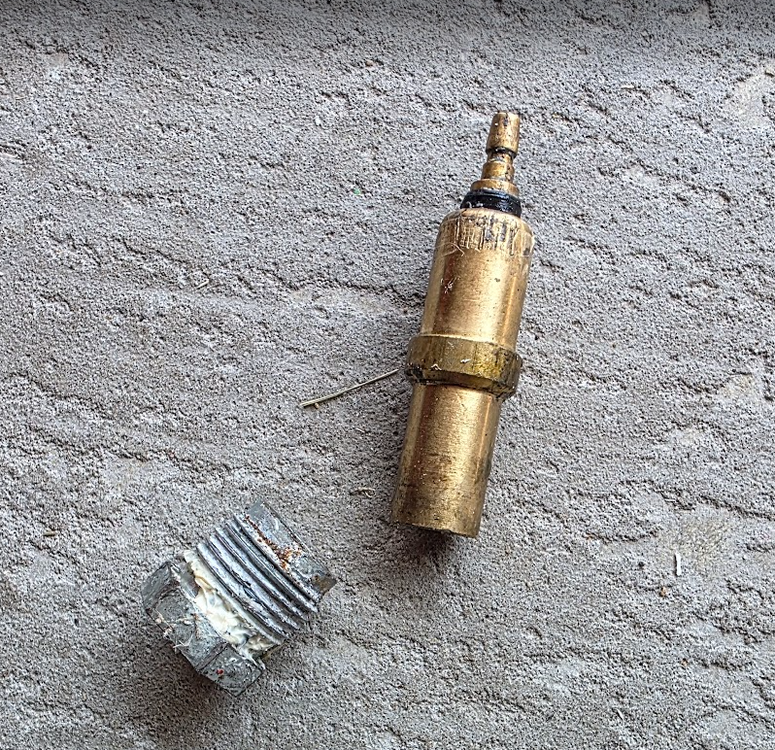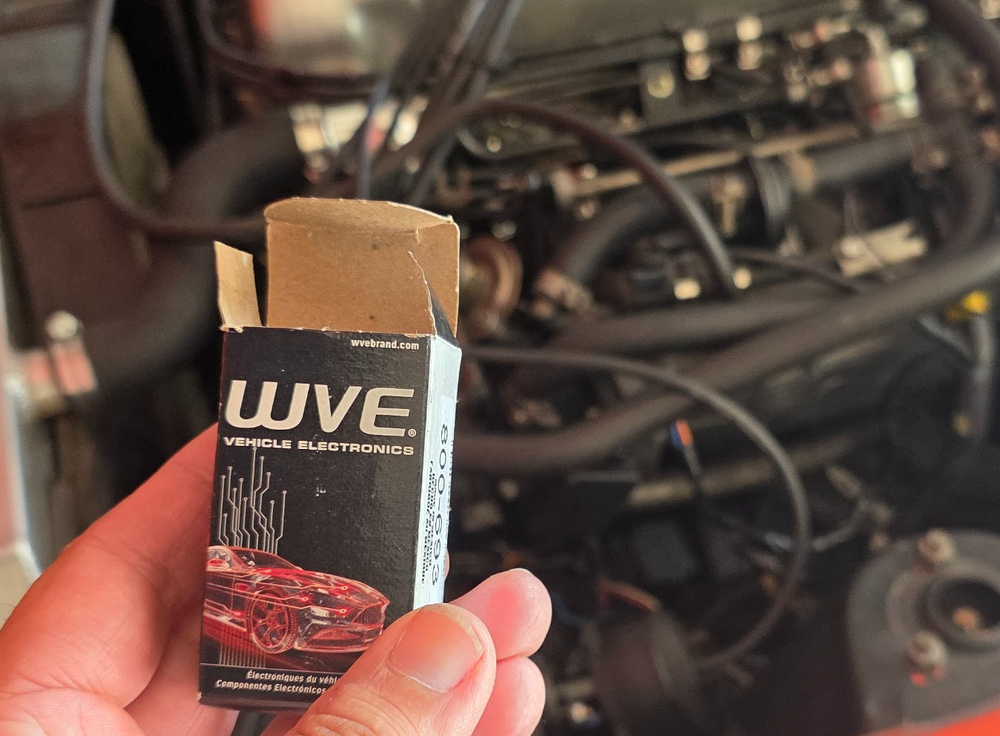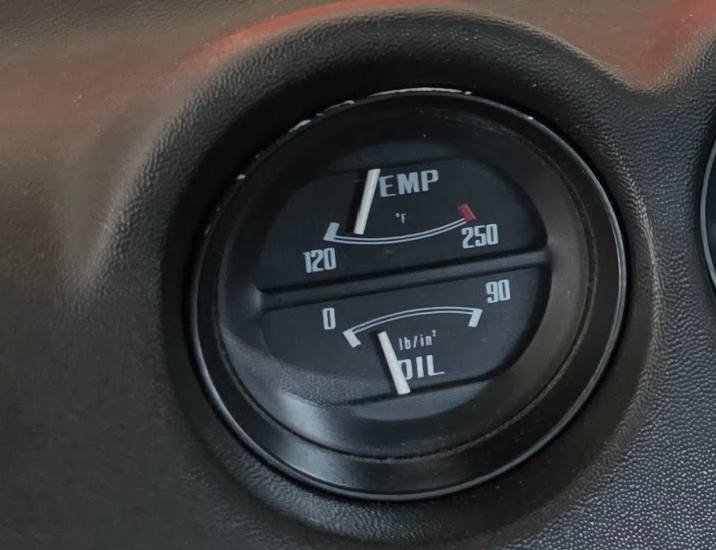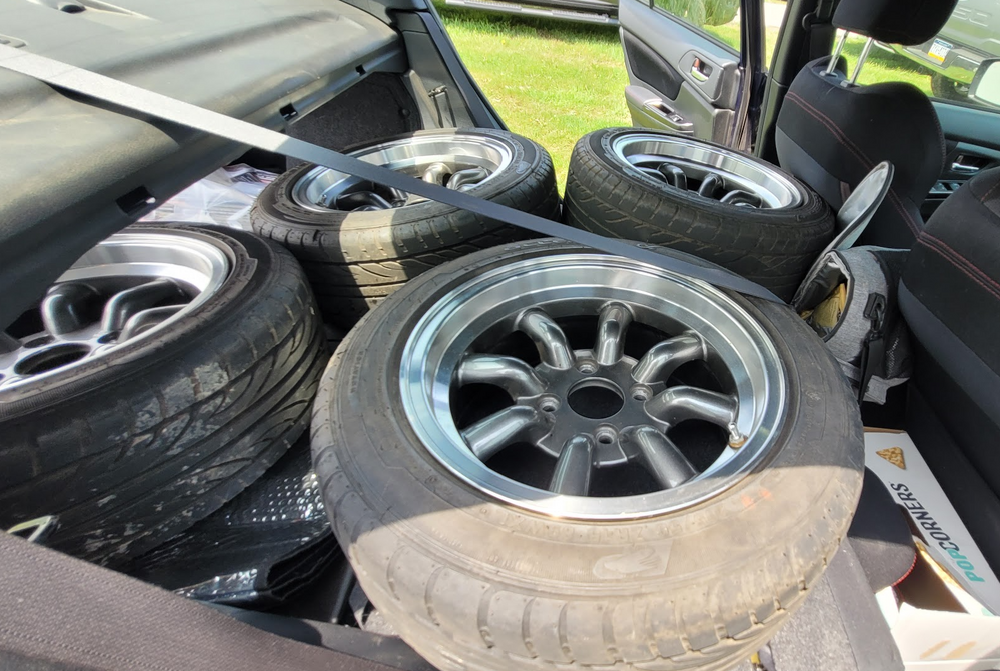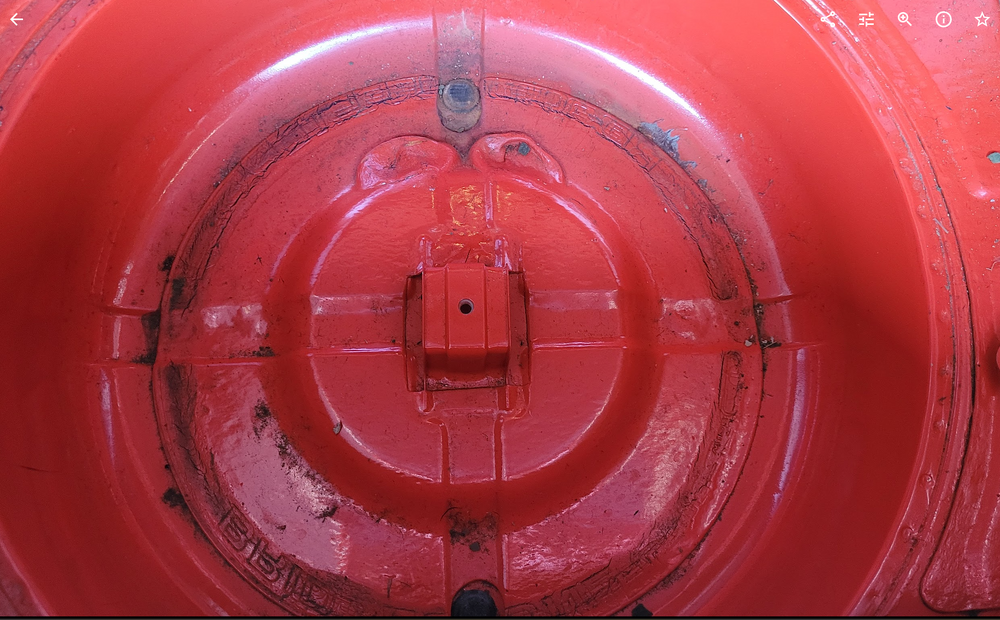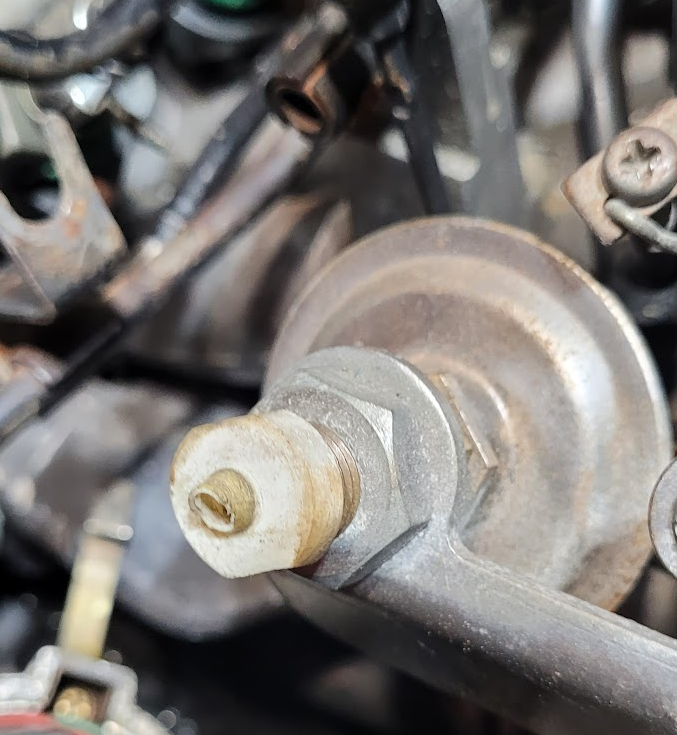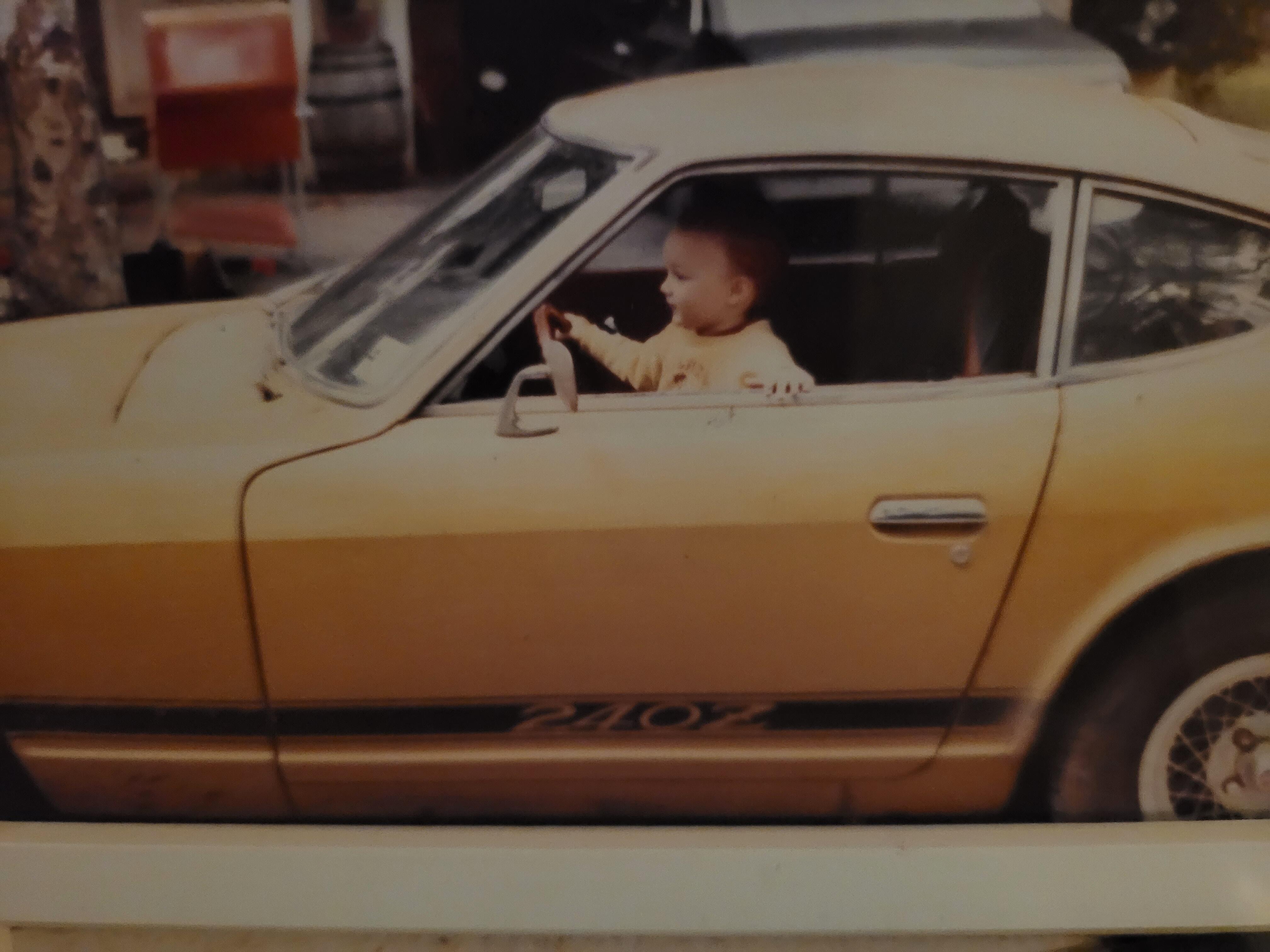
-
Floor pans, help me choose
I'm going to need to get some replacement floor pans as well. I have had at least three separate people tell me to go with KF Vintage. One was a contractor that had done previous classic car restorations, another was a vendor at the Carlisle Import & Performance Nationals, and another was a Z mechanic. Needless to say, that's who I will be going with when I finally pull the trigger and decide to replace my floors. Mine were filled in with old Maxwell House coffee cans and lots of filler by a previous owner that did not want to weld. I was planning on replacing my floors as this winter's project, but I may need to put it off due to the persistent Gov't shutdown. Not having a current and reliable source of income may stall my plans somewhat.
-
Paulytunes started following 1970-76 spare tire tub differences , Floor pans, help me choose , Seiko Datsun Watch and 3 others
-
Seiko Datsun Watch
I really, really want one of these. If my 289Z were fully restored and I had no need to spend money on it, I would definitely get one.
-
1976 280Z Fuel Issues Troubleshooting
So it's been awhile since I last posted. Remember that aftermarket ECU? I found out it was bad and causing starting issues and the high idle condition. I happened to find an original replacement ECU from another 1976 2+2 and that solved my problem. I also found that the TPS was missing a screw and out of position on the throttle body. As it turns out, the missing screw had broken off inside the throttle body. I was able to source a used one and installed it. Everything now seemed to work except for the temperature gauge. This was baffling to me since I had replaced it with a new one when I replaced the thermostat and the housing. However, that one was a two piece unit. I tested the temp gauge and wiring by disconnecting the connection to the sensor, temporarily running a wire from the the connection to ground and turning the key to the on position. The gauge needle moved from resting position to max within a few seconds, eliminating the possibility of a defective gauge or wiring. This was reassuring, since I was not looking forward to having to troubleshoot a wiring issue, nor did I want to have to go and try to find another gauge. So, I purchased a new temperature sensor, this time a one piece unit. I had some free time to install it yesterday, and Voila! I once again have a working temperature gauge. Here's the one that didn't work: Here's the one that worked: And the proof:
-
Visited Toyota Auto Museum
I think there is a museum in Japan that has a lot of the old Rally cars and the one off MR2 prototype. If I ever get to Japan, I am going to need to convince my family that we need to go to all of these automotive places. The Nissan and Subaru museums are also on my must see list.
-
Aftermarket wheels on eBay
I saw these too and was tempted to get a set, but I snagged these Rotas from the Carlisle Import show instead:
-
Visited Toyota Auto Museum
Awesome! I'd love to go there someday. I'd probably spend the entire day there and never want to leave! Did they have an ST185 Celica GT-Four?
-
1976 280Z Fuel Issues Troubleshooting
Thank You!!! I was finally able to source a Bosch plastic housing replacement relay on eBay marketed as a VW part. It arrived on Tuesday, and I installed it today. I knew that was it when I turned the key and heard the hum of fuel pump. Once I added some fresh fuel to the tank, I turned the key, watched the fuel pressure gauge climb up to 36 PSIG, and the L28 started and ran! I do need to still do some troubleshooting and fix the backfiring and high idle, but those seem like much smaller challenges now that I have a running car again. Apologies to my neighbors, I think the whole community heard my hollers of joy and elation when the Z fired up this afternoon! A small victory, but a much-needed win for me today with all that has been going on at work.
-
Took some pics of my 240z side-by-side with my 2025 400z
Thanks for sharing, those are great photos! The 400Z looks a lot wider and a little taller but retains the basic Z shape. My 2018 WRX looks like a small SUV when parked next to my 280Z.
-
1976 280Z Fuel Issues Troubleshooting
Update: My 280Z will not start. I am getting 0 PSIG on the fuel pressure gauge on the fuel oil supply line. I was able to source a replacement fuel damper and plumbed up everything. Troubleshooting per the Fuel Injection and Factory Service Manual led me to find the following: All wiring connections are as intended - I did not find any plugs or harnesses disconnected. The fuel pump is not getting power when I start the car. No voltage is present at the fuel pump across the power and ground terminals when the key is in the "On" position. No voltage is present at the wiring harness under the passenger seat at the green wire and black ground when the key is in the "On" position. The fuel pump relay clicks when I try to start the car. The fuel pump operates when I run a direct line from the positive battery terminal to the pump. All of troubleshooting checks from the "Engine won't Start" section of the Fuel Injection Bible pass and my efforts lead to quote "try a different ECU." I was able to source a second ECU on eBay, but it yields the same result. My taillights and license plate lights do not work (not getting power). Running a separate ground wire from the fuel pump negative terminal to a chassis ground does not resolve the no starting condition. Based on my findings above, I am not sure what my issue is or to diagnose why I am not getting any power to the pump. Anyone have a similar problem and can diagnose? I thought maybe it was a bad ground, but wouldn't the separate ground wire have resolved the problem? From what I understand, the main ground that the fuel pump, taillights, etc. are connected to requires removal of the gas tank to access. I was hoping to avoid this, but if it is my next step, so be it. Also, when the previous damper failed, it did drip gasoline on to the pump and terminals. This is because on 1976 280Zs, the damper is above the pump and the whole kit (damper, pump, hoses, wiring) is mounted to an L shaped bracket that is mounted with three screws to the chassis. This was changed in 1977 and 1978 models to a flat plate that mounts to the chassis but places the damper and pump side-by-side. I'm guessing this was an improvement that would have reduced the possibility of a failed damper leaking fuel onto the pump. Could that wetting of the pump terminals have ruined my ground wire or power wire to the pump? How likely is it that my remanufactured aftermarket ECU and the eBay replacement (which was started to be from a 1976 2+2 4 speed, just like mine) are both bad and presenting the same exact issue?
-
1976 280Z Fuel Issues Troubleshooting
I should also mention that my 280Z does not have the vacuum switching valve shown in most of the diagrams and photos I have seen in the FSM, other manuals, photos, etc. It seems one of the previous owners removed it. Is there a vacuum line that should be connected to it, and if so, should I plug that if the vacuum switching valve isn't there? I wouldn't think that this would cause my current issues. But it does appear that this was the vacuum line that the previous owner placed on to the dashpot nipple.
-
1976 280Z Fuel Issues Troubleshooting
Over the past few months, I have been trying to continue to troubleshoot my high idle issues. I had it parked and applied throttle. It was stuttering and backfiring at high rpms, and then I noticed a hissing sound coming from the rear. I looked below, saw a puddle of gasoline on the garage floor, and found that my fuel damper had sprung a leak. This is the second one to fail since I replaced the aftermarket fuel pump with a slightly used OEM fuel pump. I came to find that the fuel dampers are incredibly hard (if not impossible) to find. It looks like the damper is no longer manufactured. An internet search revealed that these were also used on BMWs. But any mention of these 3 letters in the part search seems to add a 3x multiplier to the cost and it is also not available after hours of scouring the internet. So I ended up buying an aftermarket damper from Z Car Depot and made by Radium Engineering. Once I had the aftermarket damper in hand, I plumbed everything up and resumed troubleshooting. The new damper fixed the high idling problem, as it only idles high when cold, but then eventually settles down to ~800rpm when warmed up. It has a hard time keeping from stalling once the idle drops, and this is regardless of what adjustments I make to the idle speed screw. Applying throttle leads to backfiring and stuttering around 3000rpm, usually followed by a stall. This was the status yesterday. I troubleshooted more today and noticed that I somehow was missing the Air Flow Meter ground wire connection, so I fixed that. Now when I try to start it, I can get it to start, but stalling is almost immediate. Also, applying throttle has no effect, other than forcing a stall. I also noticed the pressure gauge I installed between the fuel filter and engine fuel supply tubing is now frozen at 10 psig. I also read through the "Purs like a kitten thread" (sic) and other threads found by searching, tried much of the troubleshooting in the FSM and Fuel Injection Bible, and other service manuals, but I have not been able to find a smoking gun or root cause of my issue. I can certainly relate to all those "that have been to hell and back with the factory EFI system," as someone said in one of the numerous posts I read. I am also beginning to think either my 280Z or I am cursed. Anyone know of a good Datsun mechanic in the Baltimore, MD area? I don't want to give up, but I am starting to lose hope.
-
1970-76 spare tire tub differences
-
1976 280Z Fuel Issues Troubleshooting
Thanks, I'll look into that. So should that vacuum house then be open to the air or connect to something else that I am not seeing? There's a three way tee, which was always connected to the dashpot nipple, a vacuum port on the bottom of the AFM, and also to the charcoal canister vent on the other side of the engine bay. The dashpot connection does indeed seem to be common, many other L28 engine photos online show it connected.
-
1976 280Z Fuel Issues Troubleshooting
So after much trial, error, troubleshooting, and going through the Fuel Injection Bible and FSM, I was able to get my 280Z running again. The issues I have now: I stupidly broke the plastic nipple on the stall dashpot while connecting the thermostat sensors and wiring: Idling is pretty high, around 2000rpm at cold start. Occasionally, it will adjust down to 700 to 800 rpm and will sometimes stall. Other times it will stay at 2000 rpm, unless I drive it and can force the RPMs lower with the gearing. When I take it out of gear, it shoots right back up to 2000 rpm. May be due to the temps here, which were between 55 and 60 degrees F today. I was able to temporarily fix the dashpot and reconnect the vacuum hose to it using a smaller diameter tube to insert into the part of the intact plastic and the vacuum hose until I can source a new dashpot assembly. I'll continue to diagnose the high idling and see if this is due to something I am overlooking or a symptom of my rebuilt ECU not performing up to OEM standards.
-
1976 280Z Fuel Issues Troubleshooting
Zed Head - that is Interesting, thanks for finding that site. The OP never does say what he did with the ECU.




 Subscriber
Subscriber

